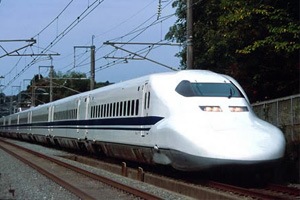China begins work on Tibet railway network
The new section will pass through five counties and over the Brahmaputra Canyon to reach Xigaze.

China has begun constructing a strategic USD 2 billion rail network to connect the Tibetan capital of Lhasa with the region’s second largest city of Xigaze that borders India,Bhutan and Nepal.
The extension of the 253-kilometre railway line costing about 13.3 billion yuan will take four years to complete,said Zhang Ping,head of the National Reform and Development Commission.
Xigaze city,besides being the home of Panchen Lamas,the second highest Tibetan spiritual head of Tibetan Buddhism,is also famous for its proximity to Mt Everest which virtually rises from it.
The sprawling Xigaze prefecture has an area of 182,000-sq-km neighbours India,Nepal and Bhutan.
The extension from Lhasa to Xigaze,is the first extension of the Qinghai-Tibet Railway,which opened in July 2006 raising concerns in India as it also provided speedier and easier access to the Chinese military to move its troops.
China also backed the extensive rail link with a network of roads and five airports in the remote region,called the roof of the world.
The new section will pass through five counties and over the 90-km long Brahmaputra Canyon,(Yarlung Zangbo Grand Canyon),to reach Xigaze,a city with a history of more than 600 years and the traditional seat of the Panchen Lamas.
“It will play a vital role in boosting tourism in the southwestern part of Tibet and promoting the rational use of resources along the line,” said Liu Zhijun,Minister of Railways.
The extended rail line will be a single line with a speed of 120 km per hour. Nearly half of the line,or 115 kilometres,will be laid in tunnels or on bridges.
“Laying rail tracks in tunnels in the mountains can avoid passing through the fragile natural reserves in Tibet,” Wang Mengshu,a railway tunnel expert and member of the Chinese Academy of Engineering,told the China Daily.
In a statement,the Ministry of Railways said the extension line avoids four natural reserves in the area.
In addition,using tunnels can help reduce damage to the railway by earthquakes,since Tibet is prone to earthquakes,Wang said.
“But the tunnels will add to the difficulty of construction,as it will be impossible to lay the tracks as fast as in the previous construction of the Qinghai-Tibet Railway,which was built on top of the permafrost,” he said.
The Qinghai-Tibet Railway is the world’s highest railway. Some 960 kilometres of its tracks are located 4,000 meters above sea level. About 550 kilometres of the tracks run on frozen earth,the longest of any of the world’s plateau railways.
The Qinghai-Tibet Railway’s first section from Xining,capital of the Qinghai province,to Golmud of Qinghai was completed and opened to traffic in 1984. Its second section from Golmud to Lhasa started construction in 2001 and opened to traffic in 2006.
A spokesman with the Ministry of Railways said the future railway network in Tibet will have a “Y” shape,with two extensions planned.
In addition to the extension from Lhasa to Xigaze,the other is from Lhasa to Nyingchi in the southeastern part of Tibet. Previous media reports had said construction would begin in 2013 at the earliest.